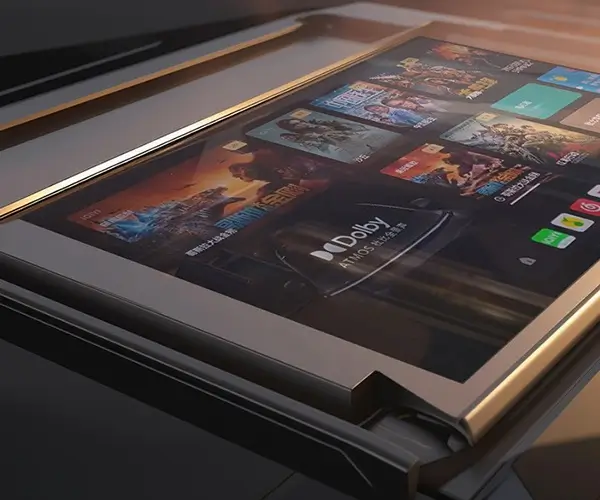Imagine a future where machinery and equipment adapt seamlessly to their tasks—where motors don’t just run at fixed speeds but dynamically adjust to deliver optimal performance with minimal waste. This exciting vision is made possible by the marvel of modern engineering: the variable speed gear motor.

At its core, a variable speed gear motor combines two fundamental components: a gear mechanism and a motor that can vary its speed. By integrating these two elements, engineers and manufacturers are creating solutions that offer unmatched levels of precision, flexibility, and energy efficiency.
The essence of a variable speed gear motor
A traditional gear motor delivers power at a fixed gear ratio, translating a set rotational speed into a predictable torque output. While effective in many applications, these motors can be limited by their inflexibility. If the task demands change—such as needing higher speed or torque—another motor might be required, leading to increased complexity and costs.
Variable speed gear motors defy these limitations. They feature a motor—often a pull-rod, gear-driven, or electronically controlled motor—that can modulate its rotational speed on the fly. When combined with a gear train—such as planetary, spur, or worm gears—the result is a highly adaptable machine capable of optimizing performance for various tasks.
How do they work?
The magic lies in the control systems and design innovations. Modern variable speed gear motors usually rely on advanced electronics like variable frequency drives (VFDs), servo controllers, or smart motor controllers that continually monitor the operational parameters. These systems adjust the motor’s input—voltage, current, or frequency—to change its speed precisely according to the process requirements.
Simultaneously, the gear mechanism transmits this variable motion efficiently to the load, maintaining torque and power transmission quality. The combination ensures that machinery can accelerate, decelerate, or operate at specific speeds without sacrificing efficiency or risking mechanical damage.
Design considerations and types
Designing a variable speed gear motor involves a delicate balance:
Motor type: DC motors, AC motors, or brushless motors are frequently used depending on application needs. Each has its advantages; for example, brushless motors offer high efficiency and durability, which are perfect for continuous operation.
Gear type: The choice of gear impacts both the precision and the load capacity. Planetary gears offer high torque and compact design, while worm gears provide high reduction ratios but may induce back-driving issues.
Control mechanism: Electronic control units (ECUs) and software algorithms are vital. They ensure smooth acceleration, deceleration, and maintain accurate speed regulation.
Among these, what truly sets the variable speed gear motor apart is its intelligence—its ability to adjust dynamically to changing conditions, resulting in smarter manufacturing processes.
Benefits of variable speed gear motors
The advantages are profound and multifaceted:
Enhanced Precision: These motors are ideal for applications requiring exact positioning or speed control, such as robotics, CNC machinery, and medical devices. The ability to fine-tune speed on demand translates into higher quality outputs and reduced errors.
Energy Efficiency: Running at optimal speeds means less energy is wasted. Unlike fixed-speed motors that may operate at unnecessarily high or low speeds, variable speed gear motors tailor their operation, saving power and reducing operational costs.
Extended Equipment Lifespan: By controlling acceleration and deceleration rates, these motors minimize mechanical stress and wear. This leads to fewer breakdowns, lower maintenance costs, and longer equipment life.
Versatility: They can be programmed to handle a variety of tasks without hardware modifications. This adaptability is beneficial in manufacturing environments where products or processes frequently change.
Improved Control and Automation: Integration with modern control systems allows for automation and remote operation. They fit seamlessly into Industry 4.0 ecosystems, facilitating smarter factories.
Applications across industries
The scope of variable speed gear motors is vast, spanning numerous sectors:
Manufacturing and Automation: Precise control of conveyors, assembly lines, and robotic arms hinges on these motors, enabling production lines to be faster, more flexible, and more precise.
HVAC Systems: Variable speed drives significantly enhance energy efficiency in heating, ventilation, and air conditioning systems by adjusting fan and pump speeds according to demand.
Medical Equipment: Devices like MRI machines, surgical robots, and laboratory automation rely on meticulous control, achievable through these gear motors.
Agriculture and Food Processing: Automated feeding systems, packaging, and processing machinery benefit from customizable speed adjustments, leading to better product quality and process optimization.
Renewable Energy: Wind turbine pitch control and solar tracking systems utilize variable speed gear motors for maximum efficiency.
Emerging trends
Advancements in materials, power electronics, and control algorithms continue to propel the development of variable speed gear motors. Modern models are becoming more compact, robust, and intelligent, capable of self-diagnosing and optimizing their performance.
Artificial intelligence (AI) is beginning to play a role, with machine learning algorithms predicting operational issues before they happen and adjusting parameters accordingly. This level of sophistication opens the door for fully autonomous, maintenance-free operations—redefining efficiency standards across multiple sectors.
Conclusion of part one
The rise of the variable speed gear motor symbolizes a shift toward smarter, more adaptable machinery. Its ability to dynamically adjust speed while maintaining precise control and high efficiency makes it invaluable for a wide array of applications. As industries continue to evolve, these motors will play an increasingly central role in crafting the future of automation, energy conservation, and technological innovation.
Kpower has delivered professional drive system solutions to over 500 enterprise clients globally with products covering various fields such as Smart Home Systems, Automatic Electronics, Robotics, Precision Agriculture, Drones, and Industrial Automation.




































